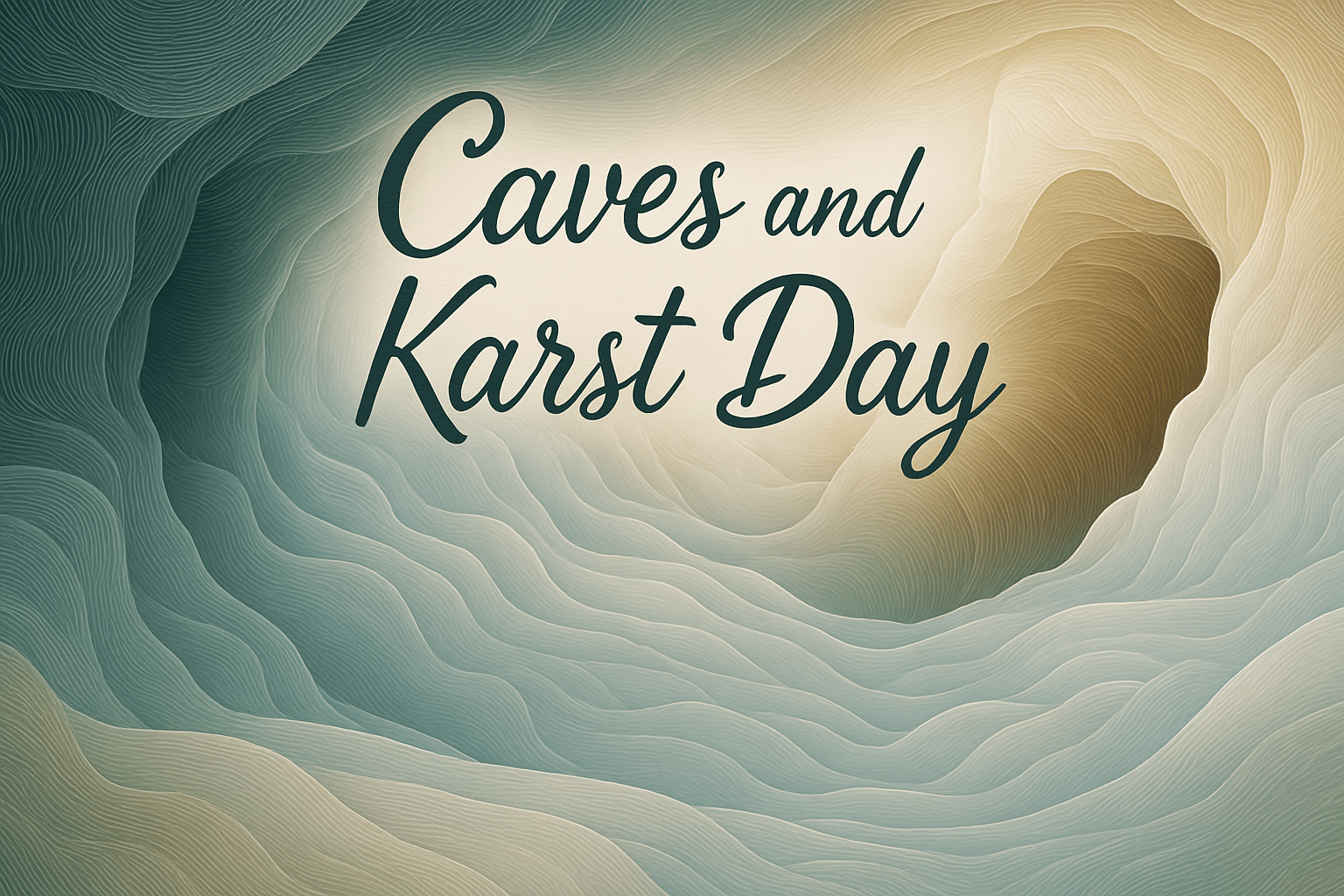What is Caves and Karst Day?
Caves and Karst Day is celebrated annually on June 6 in the United States to raise awareness about the geological formations known as karst and the intricate cave systems they create. This observance highlights the importance of caves and karst landscapes in our environment and their significance to human history and culture. Caves and karst formations offer important insights into the Earth’s geological history, provide habitats for various species, and serve as key components of natural ecosystems. The day encourages people to appreciate these natural wonders and to support their conservation.
Caves are not only beautiful but also important for scientific research and environmental protection. Karst landscapes, which are formed from the dissolution of soluble bedrock, create unique and often striking geological features, including sinkholes, underground rivers, and vast cave systems. Caves and Karst Day highlights the need to protect these valuable natural resources.
History and Origin
Caves and Karst Day was first established in 2017 by the National Caves Association to promote awareness of the importance of caves and karst landscapes. The day is designed to educate the public about the geological and ecological significance of these natural formations. The idea was to create an annual observance that would bring attention to the need for conservation and encourage exploration and research of caves.
The origins of the day coincide with global efforts to promote environmental awareness and sustainable practices in the face of growing challenges such as climate change and urbanization. As our understanding of the ecological roles of caves and karst landscapes grows, so does the importance of protecting these areas for future generations.
Who participates in Caves and Karst Day?
- Cave Enthusiasts and Explorers: Participate in guided tours and exploration activities to deepen their understanding of cave systems.
- Environmental Organizations: Host educational events and campaigns to promote the conservation of cave ecosystems.
- Educational Institutions: Conduct workshops and seminars to educate students and the public about the geological and ecological significance of caves and karst landscapes.
- General Public: Engage in activities such as visiting local caves, attending educational programs, and learning about the importance of these natural formations.
- Scientists and Researchers: Participate in scientific studies and research to better understand the geological processes and ecosystems found in caves and karst regions.
Slogans and Themes
Caves and Karst Day is associated with themes that emphasize the geological and ecological importance of caves. Common slogans include “Explore the Depths of Our Earth,” “Preserve Our Underground Treasures,” and “Discover the Hidden Wonders Beneath.” These slogans highlight the significance of these natural formations and encourage people to learn more about and protect them.
Colors, Symbols, and Patterns
Colors
- Earthy Tones: Reflect the natural colors of cave interiors, including browns, grays, and blacks.
- Blue: Symbolizes the underground rivers and water systems often found within karst landscapes.
- Green: Represents the vegetation that can be found in cave entrances and surrounding karst regions.
Symbols
- Stalagmites and Stalactites: Depict the mineral formations commonly found in caves, symbolizing the geological processes that shape these structures.
- Karst Landscapes: Illustrate the unique surface features, such as sinkholes and limestone pavements, characteristic of karst terrains.
- Bats: Highlight the diverse wildlife that inhabit caves, emphasizing the ecological importance of these environments.
Patterns
- Flowstone Patterns: Represent the sheet-like formations found on cave floors and walls, showcasing the dynamic processes of cave development.
- Speleothem Formations: Incorporate designs inspired by the various mineral formations found within caves, such as draperies and helictites.
- Underground River Motifs: Depict the winding patterns of subterranean watercourses that carve through karst landscapes.
How Do You Celebrate Caves and Karst Day?
- Visit a Local Cave: Explore nearby caves to experience their beauty and learn about their geological significance.
- Participate in Educational Programs: Attend workshops, seminars, or guided tours that offer insights into cave formations and the importance of karst landscapes.
- Engage in Conservation Activities: Join clean-up efforts or conservation projects aimed at preserving cave environments and surrounding karst regions.
- Share Knowledge: Use social media platforms to share facts, photos, and personal experiences related to caves and karst, raising awareness among your network.
- Support Research: Contribute to or participate in scientific studies that explore cave ecosystems and their role in our planet’s geology and ecology.
Why Is Caves and Karst Day Important?
Caves and karst landscapes are vital components of our natural heritage, offering unique insights into Earth’s geological history and hosting diverse ecosystems. They provide habitats for specialized species, serve as natural water filtration systems, and hold archaeological and cultural significance. Celebrating Caves and Karst Day fosters a deeper appreciation for these environments and underscores the need for their conservation. By recognizing their value, we can ensure that future generations continue to benefit from and learn from these remarkable natural formations.
Features
June 6: Caves and Karst Day (United States)
Why do you keep falling for the same type?
Read the article Lovemaps: the hidden blueprint of our love.

